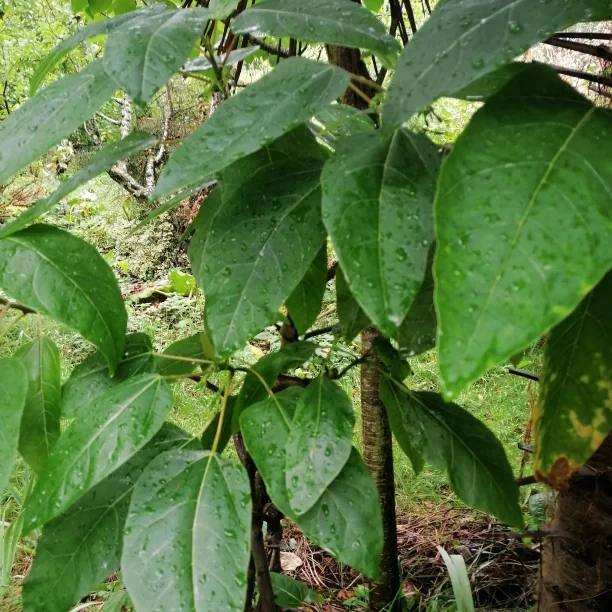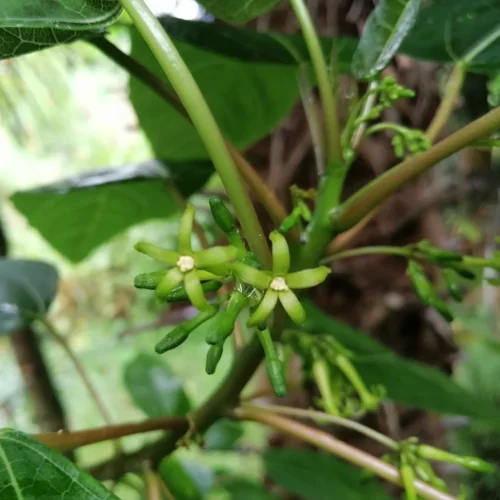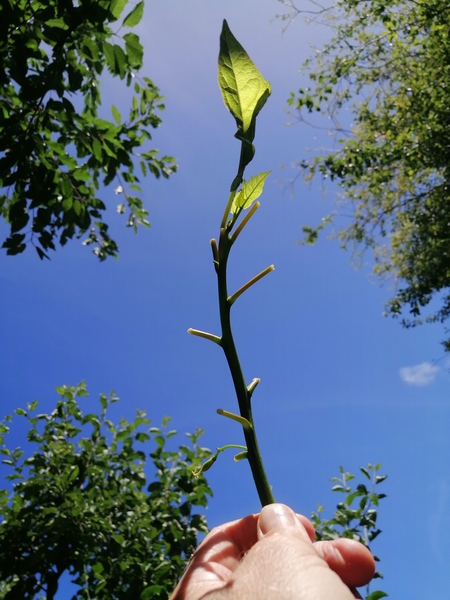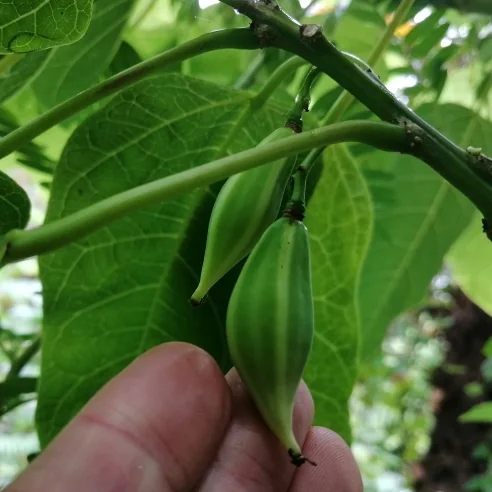Male oak leaf papaya cutting

Common name
Oak leaf papaya / pawpaw
Botanical name
Carica quercifolia
Details
For successful pollination, plant at least one male Oak Leaf Papaya within 5–10 metres of female trees to ensure effective pollen transfer.
Male Oak Leaf Papaya (Carica papaya var. ‘Oak Leaf’) trees are essential for pollination in dioecious papaya varieties, where male and female flowers grow on separate plants. Since female trees only produce fruit when pollinated, having a nearby male tree ensures fertilisation.
How Male Oak Leaf Papaya Helps with Pollination:
Male Oak Leaf Papaya (Carica papaya var. ‘Oak Leaf’) trees are essential for pollination in dioecious papaya varieties, where male and female flowers grow on separate plants. Since female trees only produce fruit when pollinated, having a nearby male tree ensures fertilisation.
How Male Oak Leaf Papaya Helps with Pollination:
- Pollen Production – Male papaya trees produce flowers that generate abundant pollen but do not bear fruit.
- Wind and Insect Pollination – The pollen from male flowers is carried by wind or pollinators (such as bees and butterflies) to the female flowers.
- Fruit Formation – When pollen reaches the stigma of a female flower, fertilisation occurs, allowing the flower to develop into fruit.
- Continuous Pollination – Since male trees bloom more frequently than females, they provide a steady supply of pollen throughout the flowering season.
Wind tolerance
poor due to big leaves
Forest layer
low-tree
Frost sensitive
Propagation method
Cutting
Price
$3.90
15 cm stem cutting


